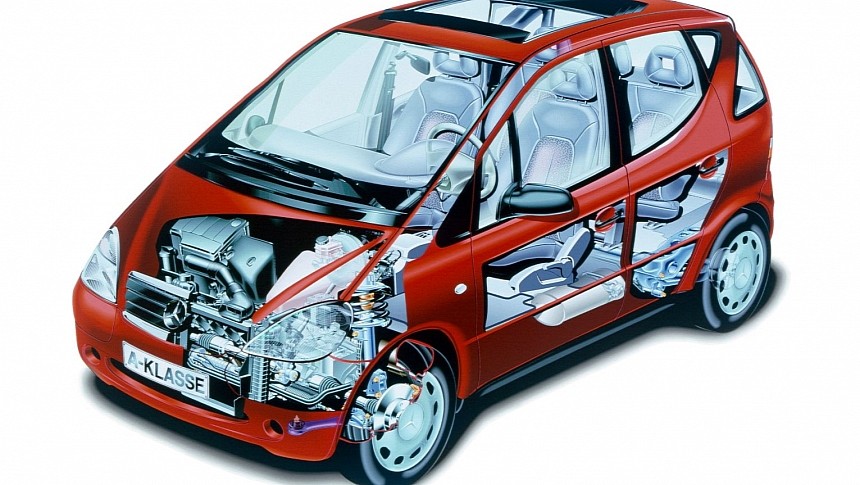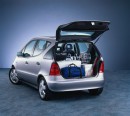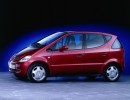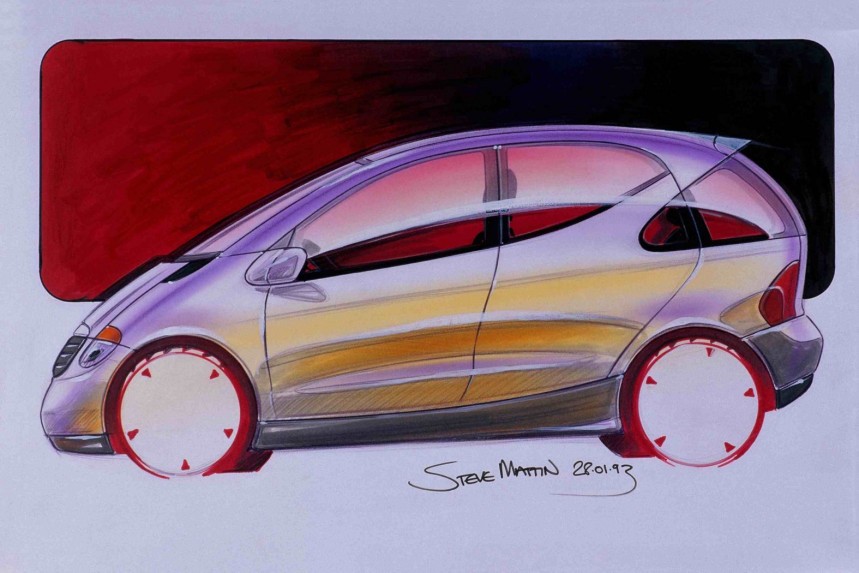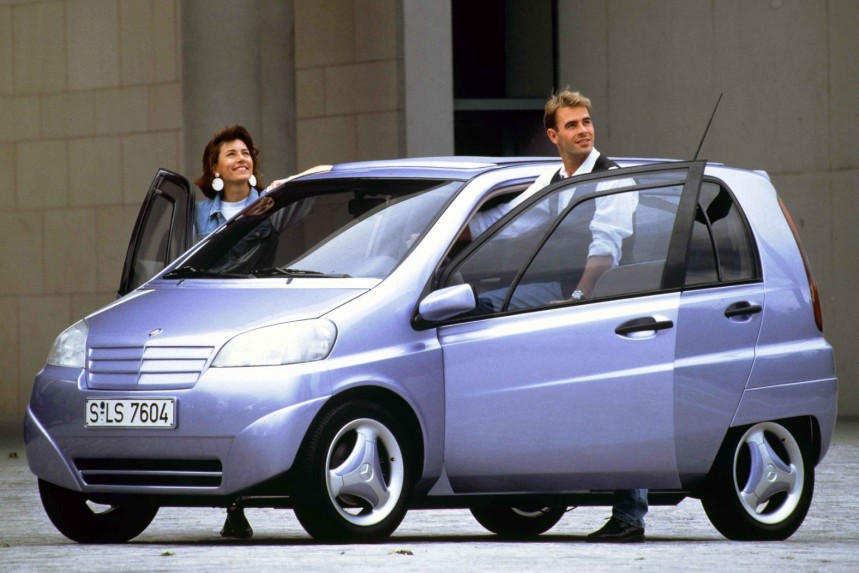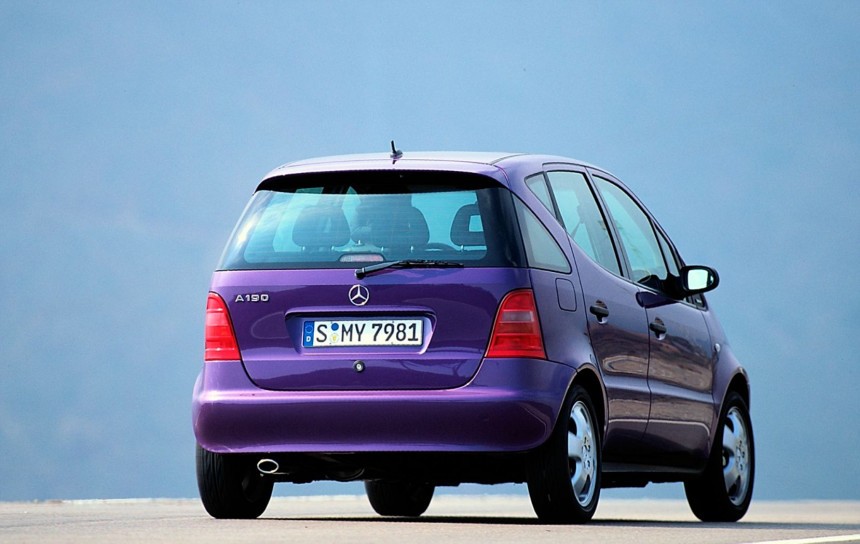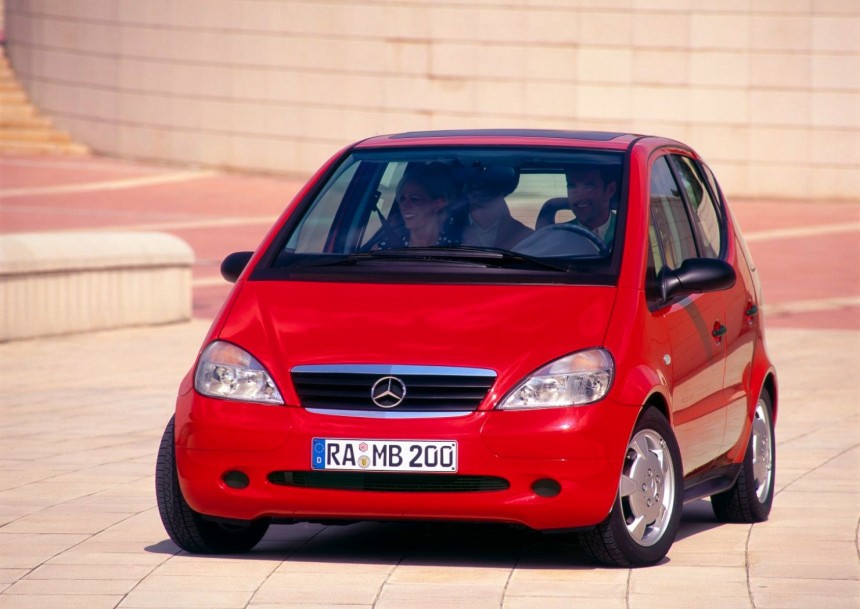The now almost-forgotten automotive culture of the 1990s was a melting pot of performance, style, and innovation. The first decade following the Cold War primarily saw the rise of Japanese performance cars, the renaissance of supercars, and the birth of tuner culture.
On the other hand, iconic sports sedans and the rise of SUVs catered to diverse consumer tastes, while eco-friendliness slowly began to shape the industry's future after being neglected for so many decades.
The newfound sense of environmental consciousness among carmakers was obviously met with skepticism at first, especially since not everyone was trying to address it in the same way.
Toyota and Honda, for example, were pioneers in developing the first mainstream hybrid passenger cars. At the same time, U.S. carmakers began to slowly transition from large, inefficient RWD sedans with a body-on-frame construction to smaller but more spacious and more fuel-efficient FWD sedans with unibody construction.
In Europe, traditional brands like Mercedes-Benz, despite their long history of innovation, were stuck with an aging and conservative model lineup for the first half of the 1990s.
To put things into perspective, not including the first-generation V-Class minivan, all Mercedes-Benz passenger cars at the time were either rear-wheel-drive with longitudinal engines or AWD in the case of the mighty G-Class.
Then, in 1997, one of the biggest automotive surprises of the 1990s came, proudly wearing a three-pointed star on the grille (which was also unheard of for a Mercedes with more than two doors at the time, but I'll get to that later).
Nowadays, remembered by many, and probably Mercedes themselves, as a rather expensive flop, the first-ever A-Class was one of the most innovative cars of the 1990s.
The A-Class was designed to propel Mercedes-Benz into the mass market. This move came at a time when company executives were concerned about the declining popularity of larger cars. However, this endeavor had its risks.
Before the tiny A-Class, Mercedes had already expanded beyond the luxury car segment, primarily through its C-Class and the 190 before it, also known as the original 'Baby Benz.' These vehicles bore size similarities to the compact executive models offered by other premium carmakers in the European market. Still, they came with the added prestige of the Mercedes emblem gracing the radiator.
With that in mind, some individuals within the industry believed that the German brand had already diversified its appeal sufficiently and questioned the need for further broadening its lineup.
Remember, the only three-pointed star passenger vehicles you could buy at the time were various iterations of the C-Class, E-Class, S-Class, SL roadster, and the mighty G-Wagen.
Nevertheless, Mercedes-Benz pressed forward with the peculiar A-Class, seeing an opportunity to capture a broader market and cater to consumers who preferred smaller, more compact vehicles. It simply needed a more space- and fuel-efficient model as a counterweight to fulfill fleet fuel economy regulations.
This bold move represented a risk from a carmaker with a relatively conservative lineup, but it reflected the company's determination to adapt to evolving consumer preferences and market dynamics.
As early as 1993, Mercedes-Benz was testing the waters from a market research point with a concept car designed to emulate how a tiny, sub-compact model would fare in its future range. The carmaker first unveiled the Vision A 93 concept at the 1993 Frankfurt Motor Show, using the motto 'Rethinking the car.'
With a front-wheel-drive configuration and a footprint smaller than a compact hatchback, the vehicle significantly departed from the brand's established identity. Mercedes-Benz clarified that such an innovative concept could potentially find a place within its future model lineup.
The public response was immediate and, in many ways, defining. People were left wondering if this truly embodied the spirit of a Mercedes-Benz vehicle. The verdict was ultimately left in the hands of the show attendees, and their judgment was overwhelmingly positive. An astonishing 80 percent of them embraced the idea of a smaller Mercedes-Benz inspired by the Vision A 93 concept.
Subsequently, when the concept car returned to the 1994 Geneva Motor Show with a few modest refinements, it adopted the "Studie A" moniker.
The decision had been made, and the Mercedes-Benz Board of Management greenlit its production, cementing the Vision A 93, or Studie A, as a pivotal moment in the brand's history.
Fast forward to 1997, following a complete redesign and a massive R&D program cost of DM 2.5 billion (1.3 billion Euros), and the smallest ever Mercedes-Benz passenger car was entering production to similar accolades as the Vision A 93 Concept.
Despite the jump into the unknown, shareholders were as happy as all the potential customers for the car, at least until disaster struck.
It was a reasonably warm October day, and most Mercedes-Benz head honchos were preparing to unveil a concept car at the other end of the luxury spectrum - the Mercedes-Benz Maybach concept at the 1997 Tokyo Motor Show.
The carmaker had already started producing the funky A-Class, and a Swedish consumer magazine called Teknikens Vaerld (Technical World) was putting a model through a special maneuvering test initially developed to increase Swedish road safety.
Before going any further, I should explain how the so-called 'moose test' is made and the rules involved. The evaluation takes place on a dry road surface, carefully designed to replicate various real-world driving scenarios. Traffic cones are strategically arranged to mimic obstacles and lanes.
The vehicle selected for testing is occupied by one individual securely fastened in the driver's seat, and additional weights are placed in the trunk to simulate a fully loaded condition.
The vehicle must skillfully maneuver through the course while maintaining a constant speed of 45 mph (72 kph) to receive a passing grade in this evaluation.
As the driver enters the testing track, they rapidly swerve into the opposing lane, avoiding the simulated obstacle. Following this maneuver, an immediate swerve back into the original lane occurs, simulating evasive action to avoid oncoming traffic. This sequence is repeated several times, each iteration conducted at progressively higher speeds.
The assessment continues until the vehicle loses control, skids or knocks over cones, or spins around. In the case of the short but relatively tall Mercedes-Benz A-Class, the car overturned during the test at a relatively low speed of 37 mph (60 kph), sending the world media into a frenzy in the process.
As news of the incident spread like wildfire, even without social media, it quickly reached the big suits at Mercedes halfway around the world, who were optimistically preparing to gather accolades for the Maybach concept.
Within 12 hours of the failed 'moose test,' the head of Mercedes-Benz cars was on a 747 with Germany as the destination, with many other executives and product engineers.
After his resignation was quickly dismissed by the head of the parent company Daimler, Prof Juergen Hubbert converted a conference room near his office into a crisis team room.
Tens of engineers and PR people from development, production, materials management, and even parts suppliers were stuck in that conference room for the next month or so, trying to untie the mess caused by the failed test.
What was initially the biggest automotive PR nightmare in the history of Mercedes-Benz quickly became one of the reasons why the first-generation A-Class is now regarded as one of the most innovative cars of its generation.
Within a month, the carmaker stopped production, recalled the 2,700 units sold until then, and rebuilt almost 17,000 units that had already been built but were still at the factory.
Working with parts supplier Bosch, Mercedes-Benz reconfigured the model's suspension and choice of tires, widened the front and rear tracks, and, as a world's first, decided to fit the A-Class with ESP (Electronic Stability Program) as standard.
Now seen on almost any modern car, no matter its size, electronic stability control was still an infant safety technology at the time and was completely absent on smaller vehicles.
After spending DM 2.5 billion (1.3 billion Euros) on its development, Mercedes forked out another DM 300 million (153 million Euros) to fix the problem. Still, it was well worth it in the end.
What made the original A-Class ahead of its time are the same reasons behind the success of the original Mini, designed by Sir Alec Issigonis.
Featuring a front-wheel-drive layout and an unusually tall yet short body, the model had an exterior size smaller than a Volkswagen Polo, which was a sub-compact. On the inside, it was almost as spacious as a Mercedes-Benz C-Class, a traditional sedan. On top of it, all the passenger seats except for the driver were foldable and easily removable, effectively turning it into a single-seat micro van.
Several innovative technical solutions comprised the car's development to achieve these insane characteristics. One was a so-called double-floor design, which strengthened the overall shell and offered increased crash safety.
Because passengers were sitting higher thanks to the concept, side impacts would initially hit the floor instead of the doors, taking most of the shock and protecting the occupants.
The so-called 'sandwich' concept of the double floor allowed clever frontal impact protection as well, as it was combined with a dramatically canted transverse engine in the front, the first of its kind. Because of a Lilliputian front end, Mercedes could not include a traditional impact structure with crumple zones. In the event of a frontal crash, the canted engine would be pushed underneath the cabin instead of toward the front passengers' legs like in conventional cars.
To put things into perspective, the original A-Class, in its long-wheelbase form, was about 28 inches (70 cm) shorter than the C-Class of the time yet provided nearly equivalent space for passengers and cargo. Surprisingly, even the heaviest version, powered by a diesel engine, tipped the scales at just 2,350 pounds (1,065 kg).
In other words, the A-Class was not much longer than a Mazda MX-5 Miata, weighed about the same, and still accommodated four passengers with a respectable trunk space. About 80 percent of the car's volume was dedicated to passengers and cargo, with the rest comprising the cleverly mounted mechanicals. Not even a commercial van had this ratio.
Despite a rough start and an image problem that followed it because of the failed 'moose test,' the original Mercedes-Benz A-Class sold in huge numbers. Between 1997 and 2004, no less than 1.1 million first-generation models have been sold.
The carmaker lost approximately $1,546 (1,440 Euros) per vehicle produced despite trying to recoup some of the money lost from the expensive development and state-of-the-art safety features included on each car with a rather large starting price.
Even though well-equipped versions were easily just as expensive as a much larger compact executive sedan such as the C-Class, people did seem to flock to dealerships, with the model becoming a sales threat even to established compact hatchbacks such as the Volkswagen Golf.
Mercedes-Benz sold another million units from the second-generation A-Class, which used a similar 'sandwich' construction but grew in size, before abandoning the concept entirely in 2012. That is when the more traditional-looking and much less expensive to develop A-Class debuted in its current form.
Funnily enough, the original model never had an electrified production version despite the double-floor design being a perfect fit for such a propulsion solution. Yet, the current model has plug-in hybrid variants with huge 15.6 kWh batteries, almost as large as what was fitted into an ill-fated prototype of the original A-Class.
Sadly, the once innovative nameplate will be put to rest starting indefinitely in 2025. Mercedes-Benz is ramping up an image growth program to steer the brand away from compact, mainstream vehicles that sell in large numbers.
Like with other innovative but effectively failed models as sales go, such as the R-Class or the smart brand, the original two iterations of the Mercedes-Benz A-Class were simply ahead of their time, but that doesn't always translate into the success you would expect.
The newfound sense of environmental consciousness among carmakers was obviously met with skepticism at first, especially since not everyone was trying to address it in the same way.
Toyota and Honda, for example, were pioneers in developing the first mainstream hybrid passenger cars. At the same time, U.S. carmakers began to slowly transition from large, inefficient RWD sedans with a body-on-frame construction to smaller but more spacious and more fuel-efficient FWD sedans with unibody construction.
In Europe, traditional brands like Mercedes-Benz, despite their long history of innovation, were stuck with an aging and conservative model lineup for the first half of the 1990s.
To put things into perspective, not including the first-generation V-Class minivan, all Mercedes-Benz passenger cars at the time were either rear-wheel-drive with longitudinal engines or AWD in the case of the mighty G-Class.
Then, in 1997, one of the biggest automotive surprises of the 1990s came, proudly wearing a three-pointed star on the grille (which was also unheard of for a Mercedes with more than two doors at the time, but I'll get to that later).
Nowadays, remembered by many, and probably Mercedes themselves, as a rather expensive flop, the first-ever A-Class was one of the most innovative cars of the 1990s.
How it All Began
Before the tiny A-Class, Mercedes had already expanded beyond the luxury car segment, primarily through its C-Class and the 190 before it, also known as the original 'Baby Benz.' These vehicles bore size similarities to the compact executive models offered by other premium carmakers in the European market. Still, they came with the added prestige of the Mercedes emblem gracing the radiator.
With that in mind, some individuals within the industry believed that the German brand had already diversified its appeal sufficiently and questioned the need for further broadening its lineup.
Remember, the only three-pointed star passenger vehicles you could buy at the time were various iterations of the C-Class, E-Class, S-Class, SL roadster, and the mighty G-Wagen.
Nevertheless, Mercedes-Benz pressed forward with the peculiar A-Class, seeing an opportunity to capture a broader market and cater to consumers who preferred smaller, more compact vehicles. It simply needed a more space- and fuel-efficient model as a counterweight to fulfill fleet fuel economy regulations.
This bold move represented a risk from a carmaker with a relatively conservative lineup, but it reflected the company's determination to adapt to evolving consumer preferences and market dynamics.
From Concept to Reality
With a front-wheel-drive configuration and a footprint smaller than a compact hatchback, the vehicle significantly departed from the brand's established identity. Mercedes-Benz clarified that such an innovative concept could potentially find a place within its future model lineup.
The public response was immediate and, in many ways, defining. People were left wondering if this truly embodied the spirit of a Mercedes-Benz vehicle. The verdict was ultimately left in the hands of the show attendees, and their judgment was overwhelmingly positive. An astonishing 80 percent of them embraced the idea of a smaller Mercedes-Benz inspired by the Vision A 93 concept.
Subsequently, when the concept car returned to the 1994 Geneva Motor Show with a few modest refinements, it adopted the "Studie A" moniker.
The decision had been made, and the Mercedes-Benz Board of Management greenlit its production, cementing the Vision A 93, or Studie A, as a pivotal moment in the brand's history.
A Rough Beginning - The Infamous 'Moose Test'
Despite the jump into the unknown, shareholders were as happy as all the potential customers for the car, at least until disaster struck.
It was a reasonably warm October day, and most Mercedes-Benz head honchos were preparing to unveil a concept car at the other end of the luxury spectrum - the Mercedes-Benz Maybach concept at the 1997 Tokyo Motor Show.
The carmaker had already started producing the funky A-Class, and a Swedish consumer magazine called Teknikens Vaerld (Technical World) was putting a model through a special maneuvering test initially developed to increase Swedish road safety.
Before going any further, I should explain how the so-called 'moose test' is made and the rules involved. The evaluation takes place on a dry road surface, carefully designed to replicate various real-world driving scenarios. Traffic cones are strategically arranged to mimic obstacles and lanes.
The vehicle selected for testing is occupied by one individual securely fastened in the driver's seat, and additional weights are placed in the trunk to simulate a fully loaded condition.
The vehicle must skillfully maneuver through the course while maintaining a constant speed of 45 mph (72 kph) to receive a passing grade in this evaluation.
As the driver enters the testing track, they rapidly swerve into the opposing lane, avoiding the simulated obstacle. Following this maneuver, an immediate swerve back into the original lane occurs, simulating evasive action to avoid oncoming traffic. This sequence is repeated several times, each iteration conducted at progressively higher speeds.
The assessment continues until the vehicle loses control, skids or knocks over cones, or spins around. In the case of the short but relatively tall Mercedes-Benz A-Class, the car overturned during the test at a relatively low speed of 37 mph (60 kph), sending the world media into a frenzy in the process.
As news of the incident spread like wildfire, even without social media, it quickly reached the big suits at Mercedes halfway around the world, who were optimistically preparing to gather accolades for the Maybach concept.
Damage Control and a PR Nightmare
After his resignation was quickly dismissed by the head of the parent company Daimler, Prof Juergen Hubbert converted a conference room near his office into a crisis team room.
Tens of engineers and PR people from development, production, materials management, and even parts suppliers were stuck in that conference room for the next month or so, trying to untie the mess caused by the failed test.
What was initially the biggest automotive PR nightmare in the history of Mercedes-Benz quickly became one of the reasons why the first-generation A-Class is now regarded as one of the most innovative cars of its generation.
Within a month, the carmaker stopped production, recalled the 2,700 units sold until then, and rebuilt almost 17,000 units that had already been built but were still at the factory.
Working with parts supplier Bosch, Mercedes-Benz reconfigured the model's suspension and choice of tires, widened the front and rear tracks, and, as a world's first, decided to fit the A-Class with ESP (Electronic Stability Program) as standard.
Now seen on almost any modern car, no matter its size, electronic stability control was still an infant safety technology at the time and was completely absent on smaller vehicles.
After spending DM 2.5 billion (1.3 billion Euros) on its development, Mercedes forked out another DM 300 million (153 million Euros) to fix the problem. Still, it was well worth it in the end.
What Is So Innovative About a Mini-Minivan?
Featuring a front-wheel-drive layout and an unusually tall yet short body, the model had an exterior size smaller than a Volkswagen Polo, which was a sub-compact. On the inside, it was almost as spacious as a Mercedes-Benz C-Class, a traditional sedan. On top of it, all the passenger seats except for the driver were foldable and easily removable, effectively turning it into a single-seat micro van.
Several innovative technical solutions comprised the car's development to achieve these insane characteristics. One was a so-called double-floor design, which strengthened the overall shell and offered increased crash safety.
Because passengers were sitting higher thanks to the concept, side impacts would initially hit the floor instead of the doors, taking most of the shock and protecting the occupants.
The so-called 'sandwich' concept of the double floor allowed clever frontal impact protection as well, as it was combined with a dramatically canted transverse engine in the front, the first of its kind. Because of a Lilliputian front end, Mercedes could not include a traditional impact structure with crumple zones. In the event of a frontal crash, the canted engine would be pushed underneath the cabin instead of toward the front passengers' legs like in conventional cars.
To put things into perspective, the original A-Class, in its long-wheelbase form, was about 28 inches (70 cm) shorter than the C-Class of the time yet provided nearly equivalent space for passengers and cargo. Surprisingly, even the heaviest version, powered by a diesel engine, tipped the scales at just 2,350 pounds (1,065 kg).
In other words, the A-Class was not much longer than a Mazda MX-5 Miata, weighed about the same, and still accommodated four passengers with a respectable trunk space. About 80 percent of the car's volume was dedicated to passengers and cargo, with the rest comprising the cleverly mounted mechanicals. Not even a commercial van had this ratio.
Despite a rough start and an image problem that followed it because of the failed 'moose test,' the original Mercedes-Benz A-Class sold in huge numbers. Between 1997 and 2004, no less than 1.1 million first-generation models have been sold.
Why Was it a Dud?
Even though well-equipped versions were easily just as expensive as a much larger compact executive sedan such as the C-Class, people did seem to flock to dealerships, with the model becoming a sales threat even to established compact hatchbacks such as the Volkswagen Golf.
Mercedes-Benz sold another million units from the second-generation A-Class, which used a similar 'sandwich' construction but grew in size, before abandoning the concept entirely in 2012. That is when the more traditional-looking and much less expensive to develop A-Class debuted in its current form.
Funnily enough, the original model never had an electrified production version despite the double-floor design being a perfect fit for such a propulsion solution. Yet, the current model has plug-in hybrid variants with huge 15.6 kWh batteries, almost as large as what was fitted into an ill-fated prototype of the original A-Class.
Sadly, the once innovative nameplate will be put to rest starting indefinitely in 2025. Mercedes-Benz is ramping up an image growth program to steer the brand away from compact, mainstream vehicles that sell in large numbers.
Like with other innovative but effectively failed models as sales go, such as the R-Class or the smart brand, the original two iterations of the Mercedes-Benz A-Class were simply ahead of their time, but that doesn't always translate into the success you would expect.
